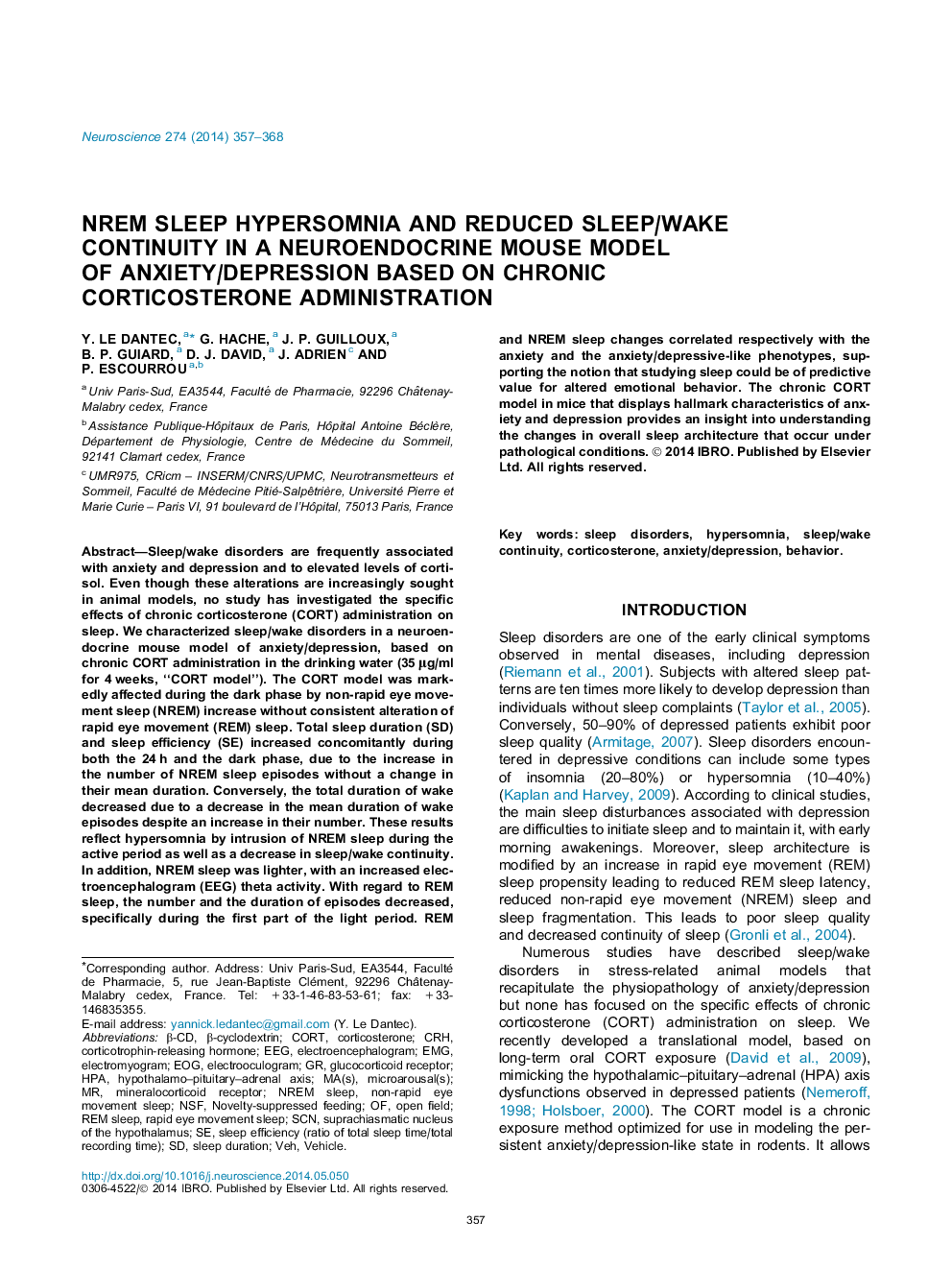| کد مقاله | کد نشریه | سال انتشار | مقاله انگلیسی | نسخه تمام متن |
|---|---|---|---|---|
| 4337624 | 1614802 | 2014 | 12 صفحه PDF | دانلود رایگان |

• Four weeks of corticosterone administration (CORT) induces NREM sleep hypersomnia.
• CORT decreases wake and REM sleep duration.
• CORT decreases sleep/wake continuity and leads to lower sleep quality.
• Higher emotionality is induced by CORT.
• Sleep disorders correlate with anxio/depressive-like behavior traits.
Sleep/wake disorders are frequently associated with anxiety and depression and to elevated levels of cortisol. Even though these alterations are increasingly sought in animal models, no study has investigated the specific effects of chronic corticosterone (CORT) administration on sleep. We characterized sleep/wake disorders in a neuroendocrine mouse model of anxiety/depression, based on chronic CORT administration in the drinking water (35 μg/ml for 4 weeks, “CORT model”). The CORT model was markedly affected during the dark phase by non-rapid eye movement sleep (NREM) increase without consistent alteration of rapid eye movement (REM) sleep. Total sleep duration (SD) and sleep efficiency (SE) increased concomitantly during both the 24 h and the dark phase, due to the increase in the number of NREM sleep episodes without a change in their mean duration. Conversely, the total duration of wake decreased due to a decrease in the mean duration of wake episodes despite an increase in their number. These results reflect hypersomnia by intrusion of NREM sleep during the active period as well as a decrease in sleep/wake continuity. In addition, NREM sleep was lighter, with an increased electroencephalogram (EEG) theta activity. With regard to REM sleep, the number and the duration of episodes decreased, specifically during the first part of the light period. REM and NREM sleep changes correlated respectively with the anxiety and the anxiety/depressive-like phenotypes, supporting the notion that studying sleep could be of predictive value for altered emotional behavior. The chronic CORT model in mice that displays hallmark characteristics of anxiety and depression provides an insight into understanding the changes in overall sleep architecture that occur under pathological conditions.
Journal: Neuroscience - Volume 274, 22 August 2014, Pages 357–368